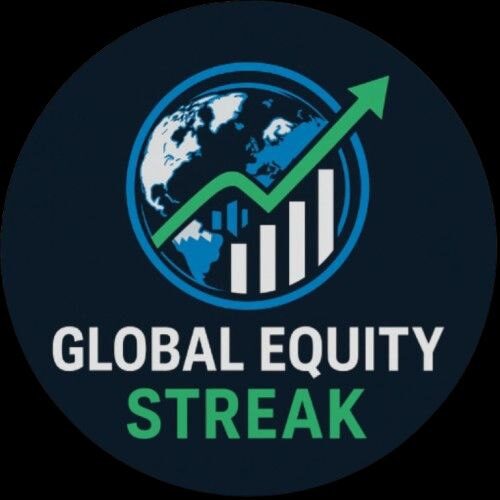Trump’s Budget Bill May Push U.S. Debt to 125% of GDP and Trigger Dollar Weakness:Former Bridgewater chief strategist Rebecca Patterson warns that Donald Trump’s proposed budget bill could significantly raise U.S. debt levels—pushing the debt-to-GDP ratio from 100% to as high as 125% over the next decade. In this blog, we explore how this rising debt burden, increased Treasury issuance, and shifting investor sentiment may weaken the U.S. dollar, impact global markets, and shift capital flows away from the United States. We also examine who might benefit globally from a weaker dollar and what risks could emerge if the trend accelerates.
Trump’s Budget Bill May Push U.S. Debt to 125% of GDP And Why the U.S. Dollar Could Keep Falling — And What It Means for Global Markets
The U.S. dollar is off to its worst start in a calendar year since 1973, and according to former Bridgewater chief strategist Rebecca Patterson, the pressure on the greenback may not be over yet. In a recent interview, Patterson highlighted how the pending U.S. budget bill, mounting debt, and shifting global investment flows are setting the stage for a weaker dollar in the months and years ahead.
The Role of the Budget Bill and Rising Debt
As Congress debates the final details of a crucial spending bill, Patterson notes that even a moderate version of the proposal would have significant implications for the U.S. economy. The nation’s debt-to-GDP ratio, which already stands at around 100%, could rise to 125% or more over the next decade. This means the U.S. will need to issue a much larger volume of Treasury bonds to finance its deficits.
The issue, Patterson explains, is that while bond supply will increase, demand may not keep up. A mismatch of this kind usually leads to higher borrowing costs. And as borrowing becomes more expensive, it tends to slow the economy. Slower economic growth makes the U.S. a less attractive destination for foreign investment—reducing demand for U.S. dollars in the process.
Short-Term Market Impacts: The Weak Dollar Dilemma
In the near term, a weaker dollar can be a mixed bag. On the one hand, it tends to benefit multinational corporations that generate a significant portion of their revenue overseas. But Patterson cautions against overstating this benefit. Most large multinationals use sophisticated currency hedging strategies that minimize the impact of exchange rate fluctuations on their earnings.
There’s also a question of causality. Historically, weaker dollars have coincided with stronger earnings-per-share (EPS) growth. However, that relationship often exists in scenarios where the Federal Reserve is cutting interest rates to stimulate growth. This time, the primary driver of dollar weakness isn’t Fed easing—it’s global investors reallocating their capital away from U.S. assets. That’s a less encouraging sign for U.S. markets and economic sentiment.
Market Sentiment at Odds with Fundamentals
Despite the dollar’s decline and broader macroeconomic concerns, the S&P 500 remains near record highs. But as Patterson points out, the U.S. equity market is starting to look overbought. A disconnect between weakening fundamentals and rising asset prices could pose risks ahead, especially if dollar weakness accelerates or global investors continue to lose confidence in the U.S. as a safe haven.
Concerns About Fed Independence and Broader Systemic Risks
Tim Seymour, Commenting On This, raised a critical point about broader concerns—namely, whether investors are losing faith in the Federal Reserve’s independence. Patterson didn’t dismiss this idea. She emphasized that dollar weakness is increasingly tied to systemic issues, not just interest rates or inflation. The United States has benefited from being the global capital magnet for nearly 15 years. If that changes, the dollar’s role in global finance could gradually weaken.
Winners in a World of a Weaker Dollar
So who benefits from a weakening U.S. dollar? Emerging markets could be in a stronger position, at least relatively speaking. Patterson points to early signs of economic recovery in Europe—particularly in Germany—as one area where equity markets are now outperforming the U.S. She also notes that a stronger euro could soon become a concern for the European Central Bank if it continues toward the 1.20 mark.
However, not all countries benefit equally from dollar weakness. Some are already facing pressures due to currency appreciation. Taiwan’s central bank is actively intervening to prevent its currency from rising too fast. Switzerland has responded to franc strength by cutting interest rates to zero. Meanwhile, Hong Kong is taking steps to protect its dollar peg.
Potential Risks Ahead
While Patterson doesn’t foresee an immediate currency crisis, she warns that the situation could evolve if dollar weakness continues rapidly. Abrupt shifts in currency markets can lead to broader financial stress, especially if central banks around the world are forced to respond in a chaotic or uncoordinated way. These stresses could eventually spill over into equities, bonds, and other asset classes.
The dollar’s recent decline is not just a short-term blip—it reflects deeper shifts in fiscal policy, investor sentiment, and global capital flows. While some markets and regions may benefit from a weaker dollar, the long-term implications could be more complex. From rising U.S. debt levels to waning investor confidence in the Fed, the forces driving this trend are structural. Investors and policymakers alike will need to navigate the road ahead carefully.
Disclaimer:
This article is based on expert opinions and market analysis at the time of publication. Currency trends and market conditions are subject to change. Readers are advised to consult financial professionals before making investment decisions.

